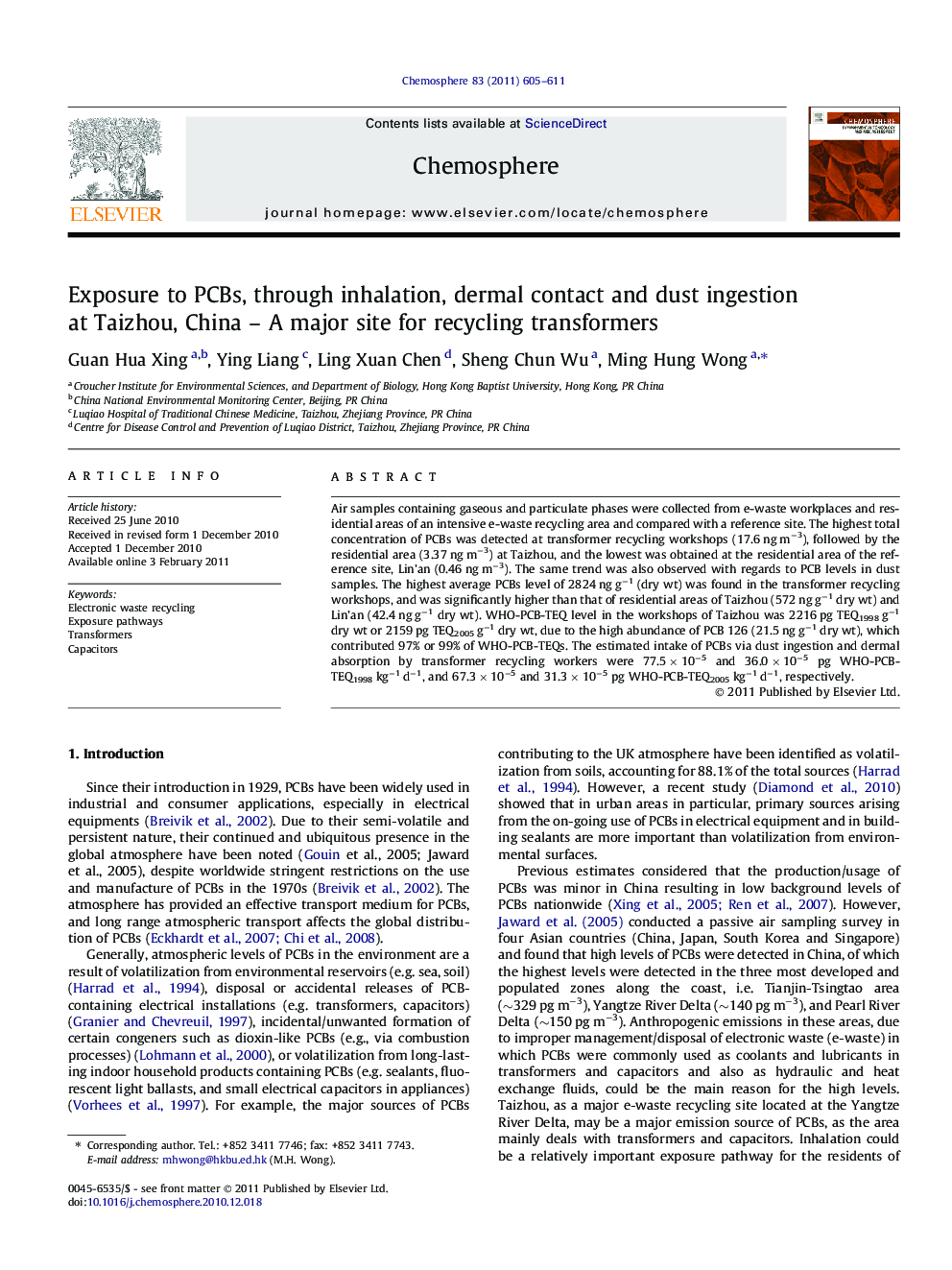| Article ID | Journal | Published Year | Pages | File Type |
|---|---|---|---|---|
| 4411086 | Chemosphere | 2011 | 7 Pages |
Air samples containing gaseous and particulate phases were collected from e-waste workplaces and residential areas of an intensive e-waste recycling area and compared with a reference site. The highest total concentration of PCBs was detected at transformer recycling workshops (17.6 ng m−3), followed by the residential area (3.37 ng m−3) at Taizhou, and the lowest was obtained at the residential area of the reference site, Lin’an (0.46 ng m−3). The same trend was also observed with regards to PCB levels in dust samples. The highest average PCBs level of 2824 ng g−1 (dry wt) was found in the transformer recycling workshops, and was significantly higher than that of residential areas of Taizhou (572 ng g−1 dry wt) and Lin’an (42.4 ng g−1 dry wt). WHO-PCB-TEQ level in the workshops of Taizhou was 2216 pg TEQ1998 g−1 dry wt or 2159 pg TEQ2005 g−1 dry wt, due to the high abundance of PCB 126 (21.5 ng g−1 dry wt), which contributed 97% or 99% of WHO-PCB-TEQs. The estimated intake of PCBs via dust ingestion and dermal absorption by transformer recycling workers were 77.5 × 10−5 and 36.0 × 10−5 pg WHO-PCB-TEQ1998 kg−1 d−1, and 67.3 × 10−5 and 31.3 × 10−5 pg WHO-PCB-TEQ2005 kg−1 d−1, respectively.
Research highlights► Taizhou, Zhejiang Province is a major site for recycling transformers in the world. ► PCB levels in air and dust at workshops were higher than at residential areas. ► Highest level in workshop was 17.6 ng m−3 (air) and 2159 pg TEQ2005/g dry wt (dust). ► Estimated intake via dust ingestion by workers was 67.3 × 10−5 pg WHO-PCB-TEQ/kg/d. ► Estimated intake via dermal absorption was 31.3 × 10−5 pg WHO-PCB-TEQ/kg/d.
